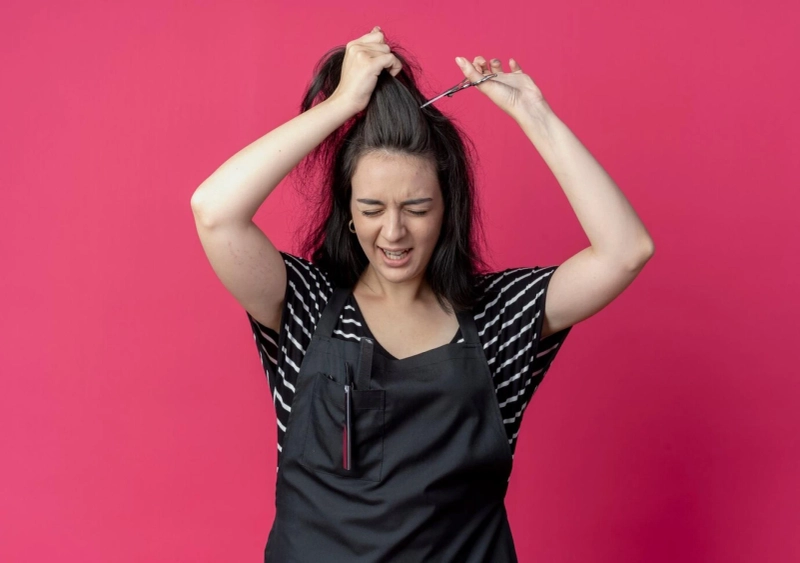Trichotillomania, a condition characterized by recurrent hair pulling, can significantly impact an individual's life. While many may feel alone in their struggle, effective treatments are available that can help manage and reduce the urge to pull hair. Understanding these treatment options is essential for those seeking relief and empowerment over their condition.
Hair Pulling Trichotillomania Treatment often includes cognitive-behavioral therapy, which has emerged as a key approach in treating trichotillomania. This therapy focuses on identifying triggers and developing coping strategies that can aid in breaking the cycle of hair pulling. Additionally, some may find success with behavioral interventions that encourage alternative actions to replace the habit.
Medications, such as selective serotonin reuptake inhibitors (SSRIs), are also explored in treatment plans. While results may vary, combining therapy with medication often provides a comprehensive approach, offering individuals multiple avenues for recovery. With the right strategies, those affected can find a path to manage their symptoms and reclaim their lives.
Understanding Trichotillomania
Trichotillomania is characterized by compulsive hair pulling, which can lead to noticeable hair loss and emotional distress. Recognizing the symptoms and understanding the psychological factors is vital for effective intervention.
Symptoms and Diagnosis
Individuals with trichotillomania experience recurrent, irresistible urges to pull out hair from various body areas, including the scalp, eyebrows, and eyelashes. This behavior can result in significant hair loss, emotional pain, and social embarrassment.
Common symptoms include:
- Visible hair loss.
- Tension before pulling.
- Sense of relief after pulling.
- Attempts to stop without success.
Diagnosis typically involves a thorough evaluation by a mental health professional, who may use established criteria from the DSM-5.
Psychological and Behavioral Factors
Trichotillomania is often linked to underlying psychological conditions, including anxiety and depression. Many individuals pull hair as a way to cope with stress or regulate emotional states.
Behavioral triggers might include:
- Boredom or frustration.
- Stressful situations.
- Attention-seeking or avoidance.
Cognitive-behavioral therapy (CBT) has shown promise in treating trichotillomania. It focuses on modifying the thought patterns that lead to hair pulling, helping individuals develop healthier coping strategies.
Treatment Approaches
Several effective treatment approaches exist for addressing trichotillomania, combining behavioral strategies, medication, and supportive therapies. Understanding these methods can help individuals find the right path for managing their condition.
Behavioral Modification Therapies
Cognitive Behavioral Therapy (CBT) is a primary approach used to treat trichotillomania. This therapy focuses on identifying triggers and modifying behaviors associated with hair pulling. CBT often includes habit reversal training (HRT), which helps individuals recognize the urge to pull hair and replace it with a competing response.
Another technique is Acceptance and Commitment Therapy (ACT), promoting mindfulness and acceptance of thoughts and feelings instead of avoiding them. Keeping a diary to track pulling episodes can also increase awareness of behaviors, aiding the therapeutic process.
These therapies typically require regular sessions and active participation, reinforcing skills that empower individuals to manage their condition.
Pharmacological Treatments
Medications can play a crucial role in managing symptoms of trichotillomania. Selective Serotonin Reuptake Inhibitors (SSRIs) are commonly prescribed. They can help reduce anxiety and improve emotional regulation.
Clomipramine, a tricyclic antidepressant, has shown effectiveness in some cases, particularly when combined with therapy. Additionally, N-acetylcysteine (NAC) is a supplement that may reduce hair pulling by modulating glutamate levels in the brain.
Medication should always be accompanied by regular consultation with a healthcare provider, focusing on individual response and adjustment as needed.
Supportive Therapies and Self-Care
Support groups provide a valuable space for individuals to share experiences and coping strategies. These connections can reduce feelings of isolation and foster a sense of community.
Self-care strategies include stress management techniques such as mindfulness, meditation, and exercise. Developing a personal care routine that prioritizes emotional and physical health is essential.
Utilizing tools like fidget toys or stress balls can help redirect the urge to pull hair. Keeping hair short or styled in a way that minimizes pulling can also be beneficial.


